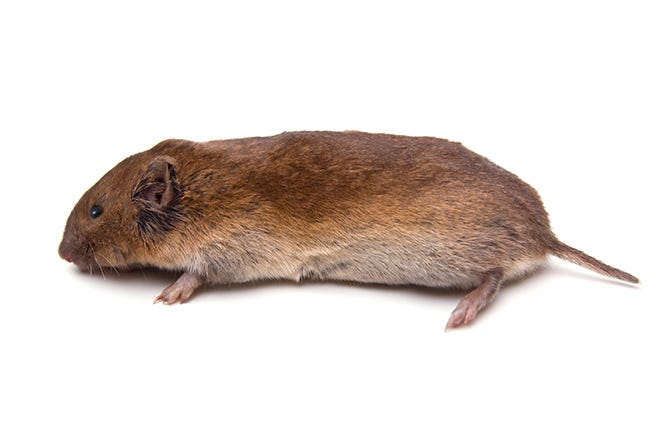One of the most common questions we are asked is “which animals are bad for our plants?”. Unfortunately, the vast majority of animals that visit your yard or garden have one goal in mind, food. While animals might see your lawn and garden as the perfect buffet, we know that you work hard to grow your plants and want to keep those animals away if possible. Here are a few of the most common critters that might munch on your plants and a few ways you can win the fight.
The Shortlist of Animals That Are Bad For Your Plants and Garden
The list of animals that could eat your garden varies depending on your region and the type of plants you have. There are dozens of different creatures that have been known to cause damage to plants, but we narrowed down the list for you. Here are a few of the most common culprits to be on the lookout for.
- Deer
- Rabbits
- Raccoons
- Squirrels
- Voles
- Groundhogs
Deer
Deer are the largest culprit when it comes to garden destruction. Even just one deer can wipe out your perfectly manicured garden in no time at all. Hostas, tulips, roses, daylilies, blueberries, you name it, and most likely a deer will eat it. Few plants are off-limits to a hungry deer.
Rabbits
If you have a vegetable garden, you’ve probably waged war against rabbits who love to snack on a wide variety of vegetables. Due to their small size, they usually eat shorter plants and flowers (especially tulips) but don’t let this deceive you. One rabbit can eat up to a pound of food each day.
Raccoons
Of all the animals on this list, raccoons are the most opportunistic, and their diets are largely determined by their environment. When they aren’t digging through your garbage for potential snacks, they will eat fruit, nuts, rodents, insects, vegetables, and berries to name a few. While some animals will stick to certain types of plants, your entire garden is up for grabs in a raccoon’s opinion.
Squirrels
While squirrels are more commonly known for their nut and acorn foraging, they can still cause major damage to plants. When their primary food source is unavailable or low, they will help themselves to your vegetables, fruits, and other flowering plants. They can be particularly destructive in gardens due to their ability to jump over fences and climb up all sorts of plants which means no part of your plants are off limits.
Voles
Voles are tiny rodents that are so sneaky you might not even notice they have destroyed some of your plants. Their favorite foods include grasses, herbaceous plants, roots, seeds, bark, seedlings, and bulbs. You may notice yellowing or withered plants after they have chewed off their roots. You’ll also see long runways in your yard where they have eaten a pathway through your grass.
Groundhogs
Groundhogs are another critter that can do major damage to plants above and below ground. They will raid gardens, typically in the Fall and Spring, right before and after their winter hibernation. Their diet mainly consists of wild plants such as clover and alfalfa, but they will not hesitate to fatten up on your vegetables, apples, flowers, bark, clover, beans, and dandelions.
Solutions For Your Garden
Understandably, you might be getting anxious wondering how in the world you are going to keep one animal out much less all of them before all of your plants are gone. Don’t worry. There are plenty of great options that can keep critters from destroying your plants. Here are a few of the most common solutions.
- Add fencing or mesh around gardens, flower beds, or trees. This will help keep certain kinds of animal, such as rabbits and deer, from being able to walk right in and eat whatever they want.
- Use a repellent. If adding a barrier isn’t feasible this is a great and invisible option! Here is a comprehensive guide to help you choose the best one for you.
- An environmentally-friendly option is a motion-detecting spray repellent that sprays a short burst of water when it senses movement nearby. There are so many great success stories from this product. Plus it requires little to no effort to use and deters critters both large and small.
Have a Great Critter Story?
Tell us your stories, share photos, or ask any questions on our Facebook page. Sign up for our e-newsletter to receive exlusive offers and be the first to know about more innovative products. For more information on trapping, baiting, and other useful tips, visit our learning center.










